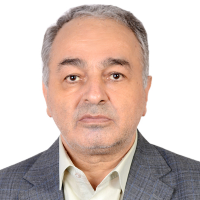Potential of Suitable Areas of Groundwater in the Plain of Tasuj Using Multi-criteria Decision Making Models AHP and ANP
According to the average annual rainfall of 250 mm in Iran, this country among the can be specified among the top arid countries. Increasing population and consequently increase in water demand have threatened the water balance during recent decades. Withdrawal of water from the aquifer in some regions has led to a quick drop in groundwater levels. This fact resulted in several problems such as: drying of wells, reducing the flow of rivers and canals, and also land subsidence. Ground water recharge is an important process in the hydrological balance of water. It is essential for regions where the proactively conservation of groundwater and surface water is strongly required. This study proposed a methodology to delineate as well as to identify favorable artificial recharge sites, using integrated remote sensing (RS), geographical information system (GIS) and multi-criteria decision making (MCDM) techniques for augmenting groundwater resources. Studied area was located in the Maran plain of the Northwest of Tabriz, Iran. This plain has been suffered from water shortage problems since the last decade. Regarding that most of the water demand in Iran is supplied by aquifers, awareness of the condition of aquifers could help manage groundwater sources. Remote Sensing (RS) and Geographical Information System (GIS) play a crucial role in analyzing groundwater. In this study, using GIS and RS and multi-criteria decision-making models, areas with the potential of containing groundwater were identified in Tasuj plain. Analytical Hierarchical Process (AHP) was used as a MCDM technique to normalize the weights of various thematic layers and their classes for delineating the groundwater potential and recharge zone maps. In the current study, areas were classified due to of potential of containing groundwater, in four classes as good, middle, poor and very poor. According to the results of AHP and ANP models, areas of alluvial fans were the best parts, due to having appropriate thickness of alluvium, transmissivity, hydraulic conductivity, water level depth, and vegetation coverage. Suitable areas are located in the northern and eastern parts of the studied plain, according the models estimations. While in the southern parts in which thickness of the alluvium was the lowest, salt marsh has been created. By the results of ANP, percentage of the plain area which belongs to each classification of groundwater potential were estimated as 33.7%, 29.41%, 25.91%,11.58%, respectively for good, middle, poor and very poor. Therefore the summation area of good and middle classes were estimated as 62.48% of the total plain area. This part contained 91% of total wells. The parameter of wells density was calculated in each class and then the results by AHP and ANP were compared. The density in the middle class by AHP and ANP model was 0.648 and 0.458. The greater amount of wells density revealed the higher groundwater potential. It was considered that the best model was that in which the density of wells in the poor and very poor classes was the less. Hence, ANP model had the better results than AHP. Field data from piezometric wells, as well as distribution of wells confirmed these results. By the results of the current study for determination of suitable areas for groundwater artificial recharge, both models of AHP and ANP revealed that the most appropriate area in Tasuj plain was the alluvial fan and low slope areas. Susceptible zones of groundwater storage places were classified in the four classes as good, middle, poor and very poor. The results of the two models were compared with the amount of density of wells. So, the ANP model showed the more acceptable results than the AHP. The detected areas in the current study were in northen parts and eastern. These parts contained gardens and appropriate vegetation coverage, hydraulic conductivity, transmissivity, alluvial thickness, groundwater depth and slope that confirmed the acceptable estimation of the models. Also, the results of this study confirmed the previous studies in the region which indicated that the most appropriate places for artificial recharge were in low-altitude areas and coarse-grained alluvial sediments. The map of groundwater high-potential zone was finally validated using the groundwater depth data from 25 wells. Consequently, the results of this study by ANP could be used in efficiently manage and artificial charge of groundwater in Tasuj plain, so as to ensure sustainable utilization of scarce groundwater resources.
-
Modeling the rainfall-runoff of Ajichai Basin using intelligent models
Pouya Allahverdipour *, Yaghob Dinpashoh
Journal of Watershed Engineering and Management, -
Study of Relative Effectiveness of Climatic Factors on Reference Crop Potential Evapotranspiration in the Southern Fringe of Caspian Sea
*, Saeid Jahanbakhsh-Asl, Asma Azadeh Garebagh
Journal of Geography and Planning, -
Integrated management of surface and underground water for the recovery of aquifers (Case study: Marand plain)
omid karimi*, esmaeil asadi, fakheri fard ahmad, yaghob dinpazhoh
Iranian Water Research Journal,



